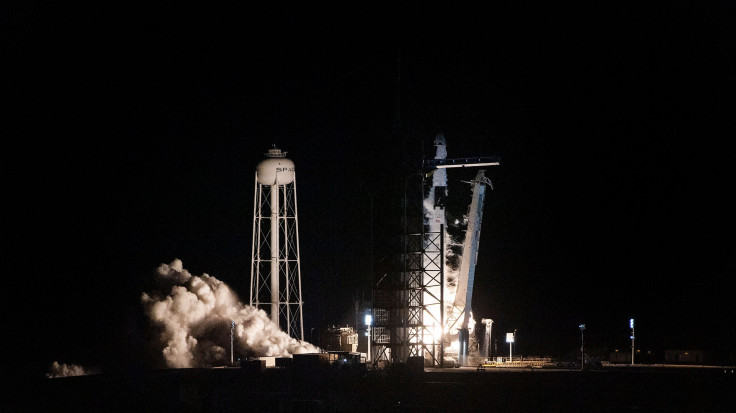SpaceX Starlink Satellite Launch Live Stream: Where To Watch Online

SpaceX will be launching a big bunch of Internet satellites tonight (May 15) which enthusiasts can watch live. The two-stage Falcon 9 Rocket will be carrying the first batch of 60 spacecraft for the Starlink mega-constellation.
Starlink, according to Space X is a next-generation satellite network that would connect globally and reach those who are not connected to offer reliable and affordable broadband internet services.
The launch of 60 Starlink satellites from Florida's Cape Canaveral Air Force Station on May 15 will take place at 10:30 p.m. EDT (0230 GMT on May 16).
The launch around midnight will be a milestone on the Starlink constellation. If things move well as scheduled, SpaceX will get the opportunity to launch 12,000 satellites to fill up the constellation to deliver cheap and reliable internet access to people around the world.
Watch it live
The lift-off can be watched live via this link. The live launch window will start 15 minutes prior to the liftoff.
According to Space X, the launch window would open at 10:30 p.m. EDT on May 15, or 2:30 UTC on May 16, and will close at 12:00 a.m. on May 16, or 4:00 UTC.
On Thursday, May 16 a backup launch window would open at 10:30 p.m. EDT, or 2:30 UTC on May 17, and close at 12:00 a.m. on May 17, or 4:00 UTC.
It is expected that after an hour and two minutes from the liftoff, the Starlink satellites will start deployment at an altitude of 440km. After that, using onboard propulsion it would seek to reach an operational altitude of 550km.
According to Space CEO Elon Musk, the 60 satellites would nearly pack the Falcon 9's payload fairing. Musk had shared a photo on Twitter very recently showing how it looks. Both Falcon 9 and Falcon Heavy use fairings of almost similar size.
Projected advantage of LEO satellites
The concept of Starlink centers on the use of low earth orbit (LEO) satellites. When an adequate number of LEO satellites is placed in orbit, they will be linked to ground terminals on Earth and would resemble small boxes.
Unlike the existing internet satellite systems, LEO satellite constellations will stay closer to Earth. The distance will be 99 to 1,200 miles compared to the massive 22,000 miles of traditional geostationary satellites.
Also, the transfer of information is rapid on the part of LEO satellites whose speeds match wired broadband and fiber-optic internet.
In fact, a study by BroadbandNow revealed that LEO satellite networks could bring about $30 billion savings to American households in terms of internet fees a year in addition to delivering the most reliable service to rural areas.
However, SpaceX is not alone in Internet-satellite dreams. OneWeb and Blue Origin owned Amazon boss Jeff Bezos are also mulling mega-constellations, in the months and years ahead.
© Copyright IBTimes 2024. All rights reserved.





















